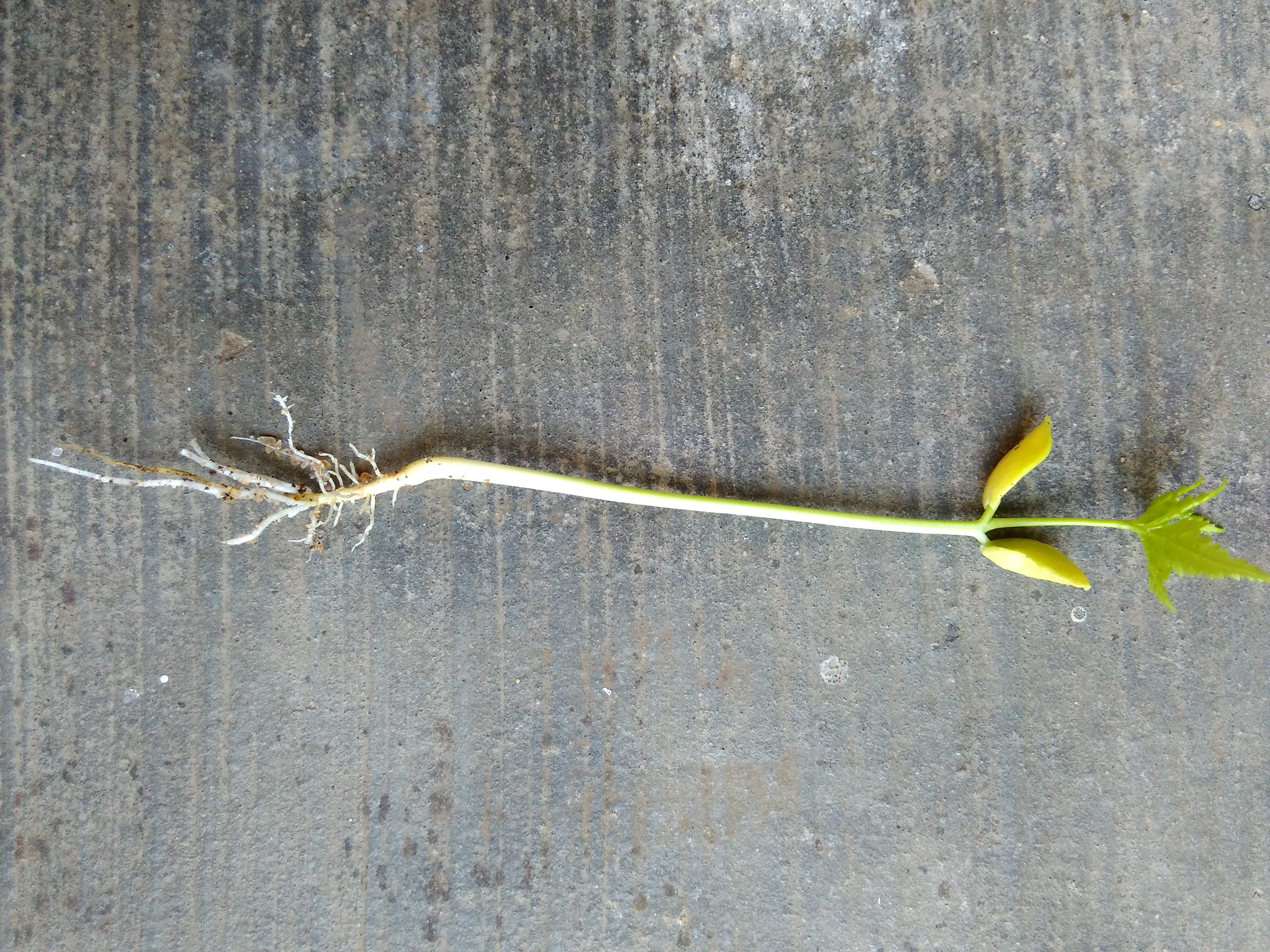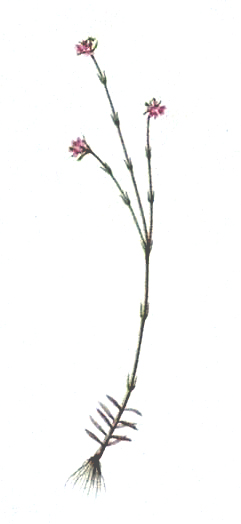|
Stylidium Aquaticum
''Stylidium aquaticum'' is a dicotyledonous plant that belongs to the genus ''Stylidium'' (family Stylidiaceae). The specific epithet ''aquaticum'' refers to this species' typical habitat. It is an annual plant that grows from 18 to 30 cm tall. Linear leaves, about 20-100 per plant, are scattered along the elongate, glabrous stem. The leaves are generally 1.7–11 mm long and 0.1-0.3 mm wide. Petioles and scapes are absent. Inflorescences are 3–8 cm long. Flowers are pink or white. ''S. aquaticum'' is only known from its type location in northwestern Northern Territory of Australia. Its habitat is recorded as being a ''Melaleuca viridiflora'' swamp, growing in shallow water at a depth of around 7 cm. It flowers in the southern hemisphere in May. ''S. aquaticum'' is most closely related to '' S. fissilobum'' but differs mostly in the leaf shape. Its conservation status has been assessed as data deficient A data deficient (DD) species is one which ... [...More Info...] [...Related Items...] OR: [Wikipedia] [Google] [Baidu] |
Dicotyledon
The dicotyledons, also known as dicots (or, more rarely, dicotyls), are one of the two groups into which all the flowering plants (angiosperms) were formerly divided. The name refers to one of the typical characteristics of the group: namely, that the seed has two embryonic leaves or cotyledons. There are around 200,000 species within this group. The other group of flowering plants were called monocotyledons (or monocots), typically each having one cotyledon. Historically, these two groups formed the two divisions of the flowering plants. Largely from the 1990s onwards, molecular phylogenetic research confirmed what had already been suspected: that dicotyledons are not a group made up of all the descendants of a common ancestor (i.e., they are not a monophyletic group). Rather, a number of lineages, such as the magnoliids and groups now collectively known as the basal angiosperms, diverged earlier than the monocots did; in other words, monocots evolved from within th ... [...More Info...] [...Related Items...] OR: [Wikipedia] [Google] [Baidu] |
Northern Territory
The Northern Territory (commonly abbreviated as NT; formally the Northern Territory of Australia) is an Australian territory in the central and central northern regions of Australia. The Northern Territory shares its borders with Western Australia to the west ( 129th meridian east), South Australia to the south ( 26th parallel south), and Queensland to the east ( 138th meridian east). To the north, the territory looks out to the Timor Sea, the Arafura Sea and the Gulf of Carpentaria, including Western New Guinea and other islands of the Indonesian archipelago. The NT covers , making it the third-largest Australian federal division, and the 11th-largest country subdivision in the world. It is sparsely populated, with a population of only 249,000 – fewer than half as many people as in Tasmania. The largest population center is the capital city of Darwin. The archaeological history of the Northern Territory may have begun more than 60,000 years ago when humans first se ... [...More Info...] [...Related Items...] OR: [Wikipedia] [Google] [Baidu] |
Carnivorous Plants Of Australia
''Carnivorous Plants of Australia'' is a three-volume work on carnivorous plants by Allen Lowrie. The three tomes were published in 1987, 1989, and 1998, by University of Western Australia Press. An entirely updated three-volume work by Lowrie was published by Redfern Natural History Productions in December 2013 as ''Carnivorous Plants of Australia Magnum Opus''.Lowrie, A. 2013. ''Carnivorous Plants of Australia Magnum Opus - Volume Three''. Redfern Natural History Productions, Poole. . Content The first volume deals exclusively with tuberous sundews (genus ''Drosera''). The second is devoted to pygmy sundews, but also includes three tuberous species described since the publication of the first volume, as well as two other sundews that do not fit elsewhere ('' D. glanduligera'' and '' D. hamiltonii''). The final volume includes the remaining sundews of Australia, together with native species of ''Aldrovanda'', '' Byblis'', ''Cephalotus'', ''Nepenthes'', and ''Utricular ... [...More Info...] [...Related Items...] OR: [Wikipedia] [Google] [Baidu] |
Asterales Of Australia
Asterales () is an order of dicotyledonous flowering plants that includes the large family Asteraceae (or Compositae) known for composite flowers made of florets, and ten families related to the Asteraceae. While asterids in general are characterized by fused petals, composite flowers consisting of many florets create the false appearance of separate petals (as found in the rosids). The order is cosmopolitan (plants found throughout most of the world including desert and frigid zones), and includes mostly herbaceous species, although a small number of trees (such as the '' Lobelia deckenii'', the giant lobelia, and '' Dendrosenecio'', giant groundsels) and shrubs are also present. Asterales are organisms that seem to have evolved from one common ancestor. Asterales share characteristics on morphological and biochemical levels. Synapomorphies (a character that is shared by two or more groups through evolutionary development) include the presence in the plants of oligosacch ... [...More Info...] [...Related Items...] OR: [Wikipedia] [Google] [Baidu] |
List Of Stylidium Species
Discovery and description of new ''Stylidium'' species has been occurring since the late 18th century, the first of which was discovered in Botany Bay in 1770 and described by Joseph Banks and Daniel Solander. , a division of the Department of Environment and Conservation In the early 19th century, the French botanist [...More Info...] [...Related Items...] OR: [Wikipedia] [Google] [Baidu] |
Data Deficient
A data deficient (DD) species is one which has been categorized by the International Union for Conservation of Nature (IUCN) as offering insufficient information for a proper assessment of conservation status to be made. This does not necessarily indicate that the species has not been extensively studied; but it does indicate that little or no information is available on the abundance and distribution of the species. The IUCN recommends that care be taken to avoid classing species as "data deficient" when the absence of records may indicate dangerously low abundance: "If the range of a taxon is suspected to be relatively circumscribed, if a considerable period of time has elapsed since the last record of the taxon, threatened status may well be justified""The Categories," in IUCN (1983). (see also precautionary principle). See also * IUCN Red List data deficient species * List of data deficient amphibians As of January 2022, the International Union for Conservation of Nature ... [...More Info...] [...Related Items...] OR: [Wikipedia] [Google] [Baidu] |
Conservation Status
The conservation status of a group of organisms (for instance, a species) indicates whether the group still exists and how likely the group is to become extinct in the near future. Many factors are taken into account when assessing conservation status: not simply the number of individuals remaining, but the overall increase or decrease in the population over time, breeding success rates, and known threats. Various systems of conservation status exist and are in use at international, multi-country, national and local levels as well as for consumer use. International systems IUCN Red List of Threatened Species The IUCN Red List of Threatened Species is the best known worldwide conservation status listing and ranking system. Species are classified by the IUCN Red List into nine groups set through criteria such as rate of decline, population size, area of geographic distribution, and degree of population and distribution fragmentation. Also included are species that have gone e ... [...More Info...] [...Related Items...] OR: [Wikipedia] [Google] [Baidu] |
Stylidium Fissilobum
''Stylidium fissilobum'' is a dicotyledonous plant that belongs to the genus ''Stylidium'' (family Stylidiaceae). It is an annual plant that grows from 5 to 50 cm tall. Linear or deltate leaves, about 4-34 per plant, are scattered along the elongate, glabrous stem. The leaves are generally 1–6 mm long and 0.3-0.7 mm wide. Petioles and scapes are absent. Inflorescences are 3–18 cm long. Flowers are pink, white, or mauve and bloom from March to July in the southern hemisphere. ''S. fissilobums wide distribution ranges across northern Australia from the western Kimberley region and Northern Territory eastward as far as Mount Surprise in Queensland. Its habitat is recorded as being wet sands at swamp edges in association with grasslands and sedgelands. Due to its weak stem, this species often threads its way through supporting branches and leaves of the dense grass and sedge cover. ''S. fissilobum'' is most closely related to '' S. aquaticum'' an ... [...More Info...] [...Related Items...] OR: [Wikipedia] [Google] [Baidu] |
Melaleuca Viridiflora
''Melaleuca viridiflora'', commonly known as broad-leaved paperbark, is a plant in the myrtle family Myrtaceae, and is native to woodlands, swamps and streams in monsoonal areas of northern Australia and New Guinea. It is usually a small tree with an open canopy, papery bark and spikes of cream, yellow, green or red flowers. Description ''Melaleuca viridiflora'' is a shrub or small tree usually growing to tall, sometimes twice that height, with white, brownish or grey bark and an open canopy. Its leaves are long, wide, thick, broadly elliptic and aromatic. The flowers are cream, yellow, yellow-green or occasionally red and arranged in spikes on the ends of branch which continue to grow after flowering and sometimes also in the upper leaf axils. Each spike contains 8 to 25 groups of flowers in threes and is up to long and in diameter. The petals are long and fall off as the flower matures. There are five bundles of stamens around the flower, each with 6 or 9 stamens althou ... [...More Info...] [...Related Items...] OR: [Wikipedia] [Google] [Baidu] |
Australia
Australia, officially the Commonwealth of Australia, is a sovereign ''Sovereign'' is a title which can be applied to the highest leader in various categories. The word is borrowed from Old French , which is ultimately derived from the Latin , meaning 'above'. The roles of a sovereign vary from monarch, ruler or ... country comprising the mainland of the Australian continent, the island of Tasmania, and numerous smaller islands. With an area of , Australia is the largest country by area in Oceania and the world's sixth-largest country. Australia is the oldest, flattest, and driest inhabited continent, with the least fertile soils. It is a megadiverse country, and its size gives it a wide variety of landscapes and climates, with deserts in the centre, tropical Forests of Australia, rainforests in the north-east, and List of mountains in Australia, mountain ranges in the south-east. The ancestors of Aboriginal Australians began arriving from south east Asia approx ... [...More Info...] [...Related Items...] OR: [Wikipedia] [Google] [Baidu] |
Biological Type
In biology, a type is a particular specimen (or in some cases a group of specimens) of an organism to which the scientific name of that organism is formally attached. In other words, a type is an example that serves to anchor or centralizes the defining features of that particular taxon. In older usage (pre-1900 in botany), a type was a taxon rather than a specimen. A taxon is a scientifically named grouping of organisms with other like organisms, a set that includes some organisms and excludes others, based on a detailed published description (for example a species description) and on the provision of type material, which is usually available to scientists for examination in a major museum research collection, or similar institution. Type specimen According to a precise set of rules laid down in the International Code of Zoological Nomenclature (ICZN) and the International Code of Nomenclature for algae, fungi, and plants (ICN), the scientific name of every taxon is almost ... [...More Info...] [...Related Items...] OR: [Wikipedia] [Google] [Baidu] |



.jpg)